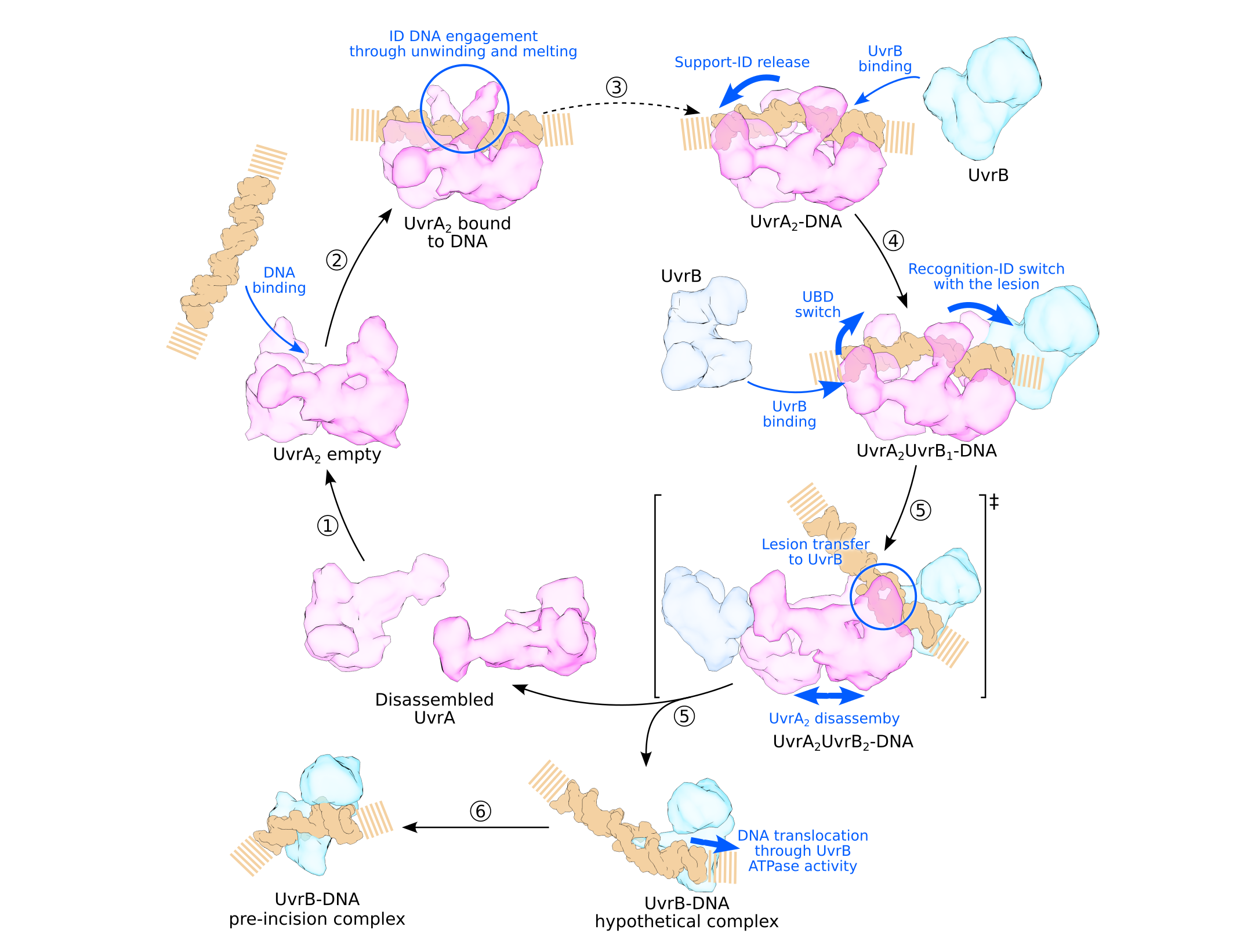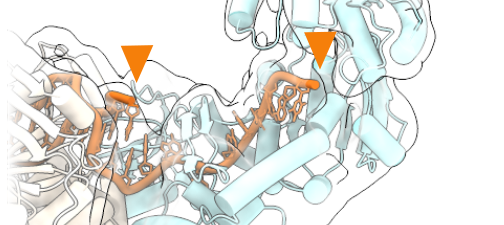Prokaryotic NER

DNA is the blueprint of life, carrying the genetic instructions that cells need to function and replicate. However, DNA is constantly under attack from environmental factors like UV radiation, chemicals, and even normal cellular processes, leading to damage that can compromise genetic integrity. If left unrepaired, DNA damage can cause mutations, impair cell function, or even lead to cell death. To counteract this, cells have evolved sophisticated DNA repair mechanisms to detect and correct these errors, ensuring stability and survival.
Our research focuses on nucleotide excision repair (NER) in prokaryotes, with a special emphasis on how cells detect DNA damage. NER is a critical repair pathway that allows bacteria to recognize and remove a wide range of DNA lesions, maintaining genomic stability. Understanding how prokaryotic systems efficiently detect and initiate repair provides key insights into the evolution of DNA repair mechanisms and has potential applications in biotechnology and antibiotic development. By studying the structural and molecular underpinnings of NER, I aim to uncover new aspects of DNA damage recognition and repair, paving the way for novel therapeutic and synthetic biology strategies.
This work is done in collaboration with the group of Prof. Miggiano from the Università del Piemonte Orientale.
